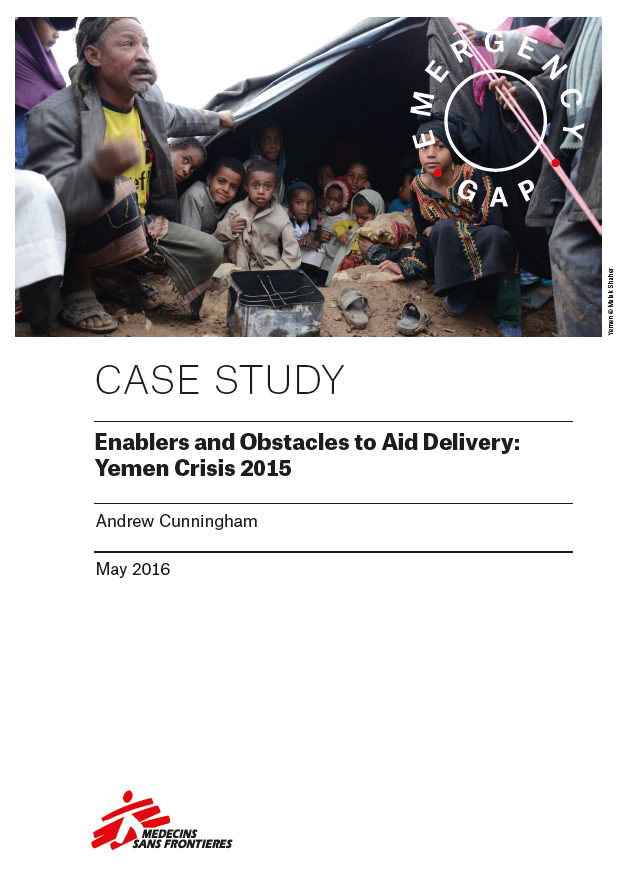Enablers and Obstacles to Aid Delivery: Yemen Crisis 2015
Case study
The humanitarian community has failed to adequately respond to the humanitarian crisis in Yemen. This report examines how humanitarian organisations responded to the crisis in 2015 and analyses the obstacles and enablers to aid delivery. Four themes have been explored in detail: humanitarian leadership; political issues and negotiated access; security management; and resources.
Obstacles to aid provision in Yemen in 2015 included the failure by all actors to provide sufficient leadership in ensuring the provision of humanitarian assistance. Leadership challenges also affected how security was managed, and improperly managed security mechanisms limited access in the Yemen response. A number of major limitations to the allocation of adequate resources have also been observed, including in terms of human resources, funding, visas, logistics and information. Each of these resources has been lacking in the Yemen context, collectively decreasing the fuel on which humanitarian operations run.
The report identifies a number of practical and potential aid enablers in the Yemen response. The former include different aspects of local capacity such as aid provided by Yemeni civil society actors and the availability of commercial logistical capacity; the declaration of the L3 crisis, which brought more attention and capacity to the country; the longer-term presence of humanitarian actors in the country; and the independent control of resources and logistical capacity. The latter include intensive and proactive networking and context analysis; being on the ground with operations; and delivering what has been promised.


 Enablers and Obstacles to Aid Delivery- Yemen Crisis 2015
Enablers and Obstacles to Aid Delivery- Yemen Crisis 2015